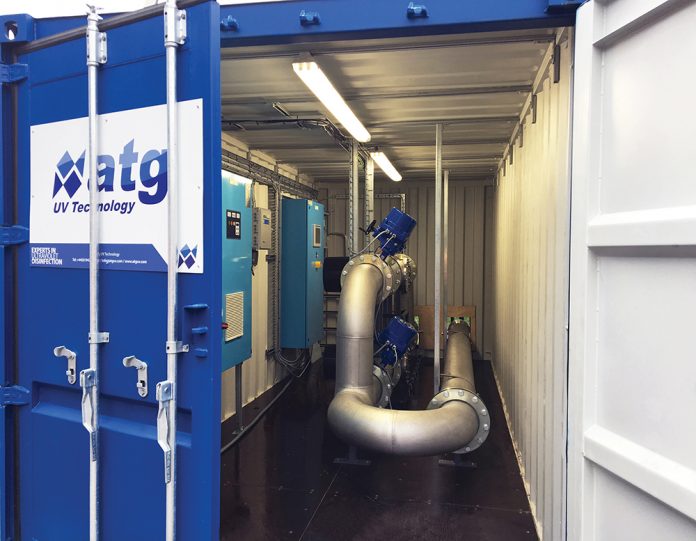Barry Hopton of atg UV Technology explains how UV disinfection can help to provide resilience in water treatment works.
We are hearing a lot about resilience around the industry, but what does it mean? The OED defines resilience as “the capacity to recover quickly from difficulties; toughness”. The Government’s “Keeping the Country Running” guidance, more specifically, considers natural hazards and the “ability of assets, networks and systems to anticipate, absorb, adapt to and/or rapidly recover from a disruptive event”. The 2014 Water Act highlights the need for long-term resilience of water and wastewater systems, whilst Ofwat focuses on the customers’ confidence that “clean, safe drinking water will be reliably available and that they can rely on their wastewater being taken away”. So how can we provide resilience?
Firstly we need to look at what we mean by disruptive events. These are well rehearsed and include population growth and environmental pressures. Population growth means not only an increase in demand for drinking water but also an expansion of agriculture to feed more mouths. Agriculture needs water. Global climate change means that more areas will be designated as arid, whilst others will become prone to flooding. This has an obvious impact on water availability but, less obviously, on water quality as the chemistry and ecology of water sources will change. Water companies are already putting together long term plans for the careful husbanding of water resources, but there is still an urgent need for education to change consumer behaviour in respect of water conservation, reuse and recycling. In the meantime the industry has to focus on treatment plant resilience.
Keeping the Country Running sets out a number of categories of resilience provision:
- redundancy to avoid dependency on single assets such as pumps
- resistance to proof the plant against known risks such as flooding
- reliability provided by design standards, quality and planned maintenance
- response to be able to recover quickly so that service is not unduly impacted
UV disinfection can play a part in all of these categories. Because of its small footprint compared to chemical disinfection, the installation of a standby stream is simple and on-line performance monitoring by UV transmittance and UV intensity makes automatic changeover easy. UV disinfection systems are completely enclosed so there is no risk of contamination from external sources, and the electrics and controls can be made fully resistant to flooding and hazardous atmospheres. Compliance with validation protocols like USEPA and UVDGM, together with on-line monitoring provides a level of reliability that is difficult to achieve with chemical systems. atg UV Technology manufactures mobile skid-mounted and containerised plant that can provide rapid response to emergencies such as Cryptosporidium incidents. They can be rapidly deployed to specific parts of the works, service reservoirs and distribution network, be operational within hours and can even include a diesel generator to provide electrical power, so that all that is needed on site is to connect water inlet and outlet.
Graham Bateman, Lead Technical Manager, Water Process at Southern Water is responsible for resilience planning and solution engineering in a heavily water stressed area supplying 530Ml/d to over two million customers with an anticipated population growth of 25% by 2050. He sees UV as a key technology. “We assess risks from source to tap, including in the catchment, at all our water supply works, service reservoirs, booster stations and trunk mains. Dependent on the historical raw water challenge at each water supply works, we adopt a planned approach to disinfection which may include permanent UV systems as part of dual disinfection. We are also considering mobile UV systems that can be rapidly deployed when required in response to a water quality incident.”
Mobile rigs have proved to be a very efficient and cost effective way of reacting to emergencies. But it is wrong to think of containerised units as just temporary solutions: they are increasingly being used for permanent installations. The lack of on-site piping and cabling together with reduced testing and commissioning time makes them a cost effective alternative to skid mounted packages installed in kiosks. The simplicity of UV disinfection, with no chemicals to store, handle and monitor makes it a natural choice for reliable primary disinfection and it can be sufficiently flexible for emergency response. In short, a resilient option for water supply resilience.
atg UV Technology, Genesis House, Richmond Hill, Pemberton, Wigan, Lancashire WN5 8AA
t: +44 (0)1942 216161
e: info@atguv.com




